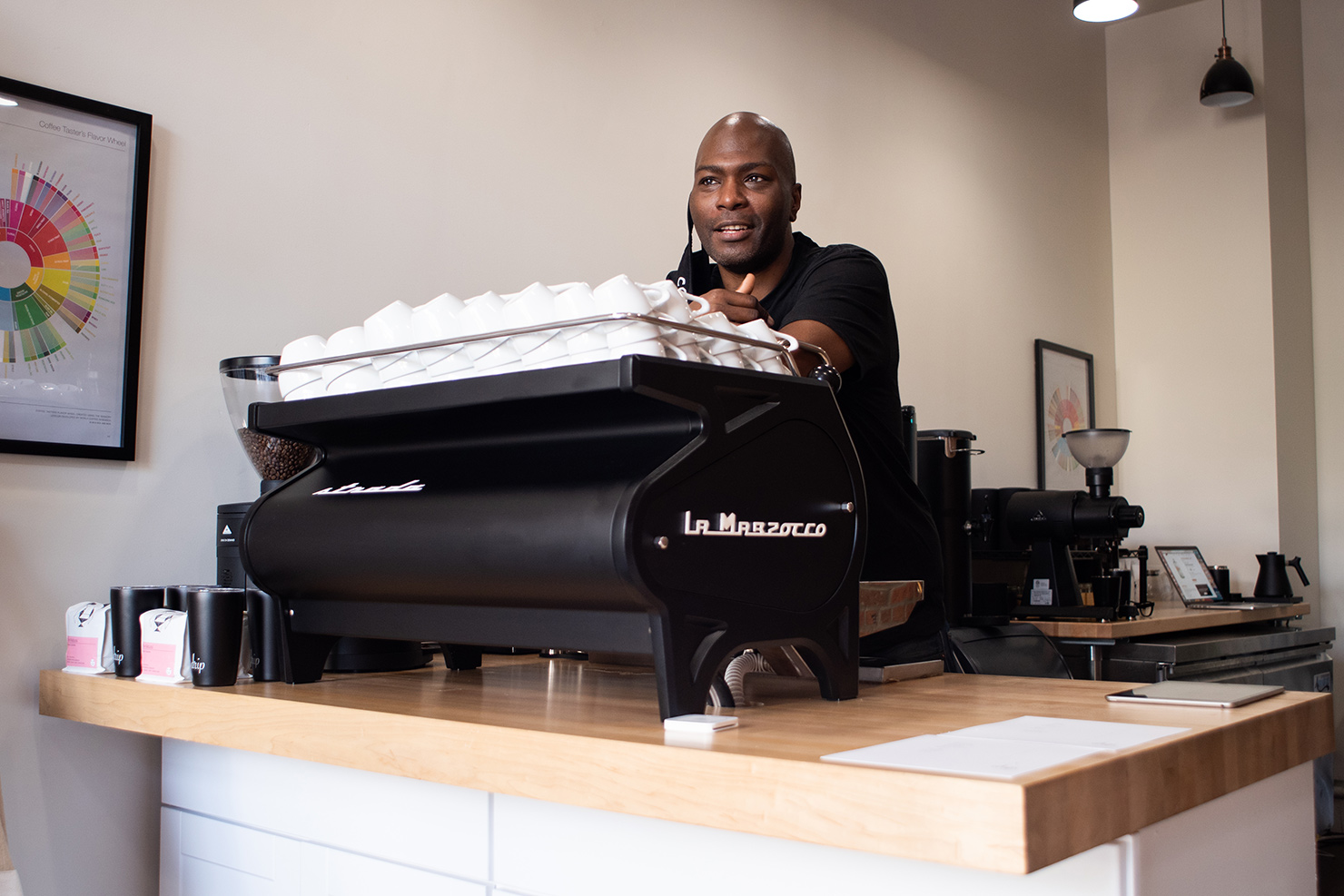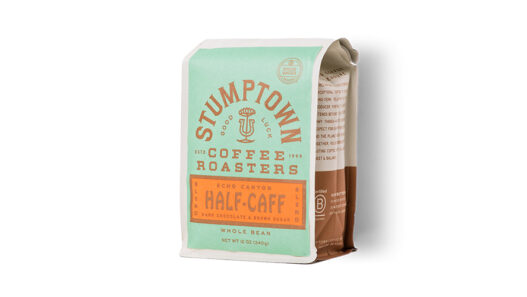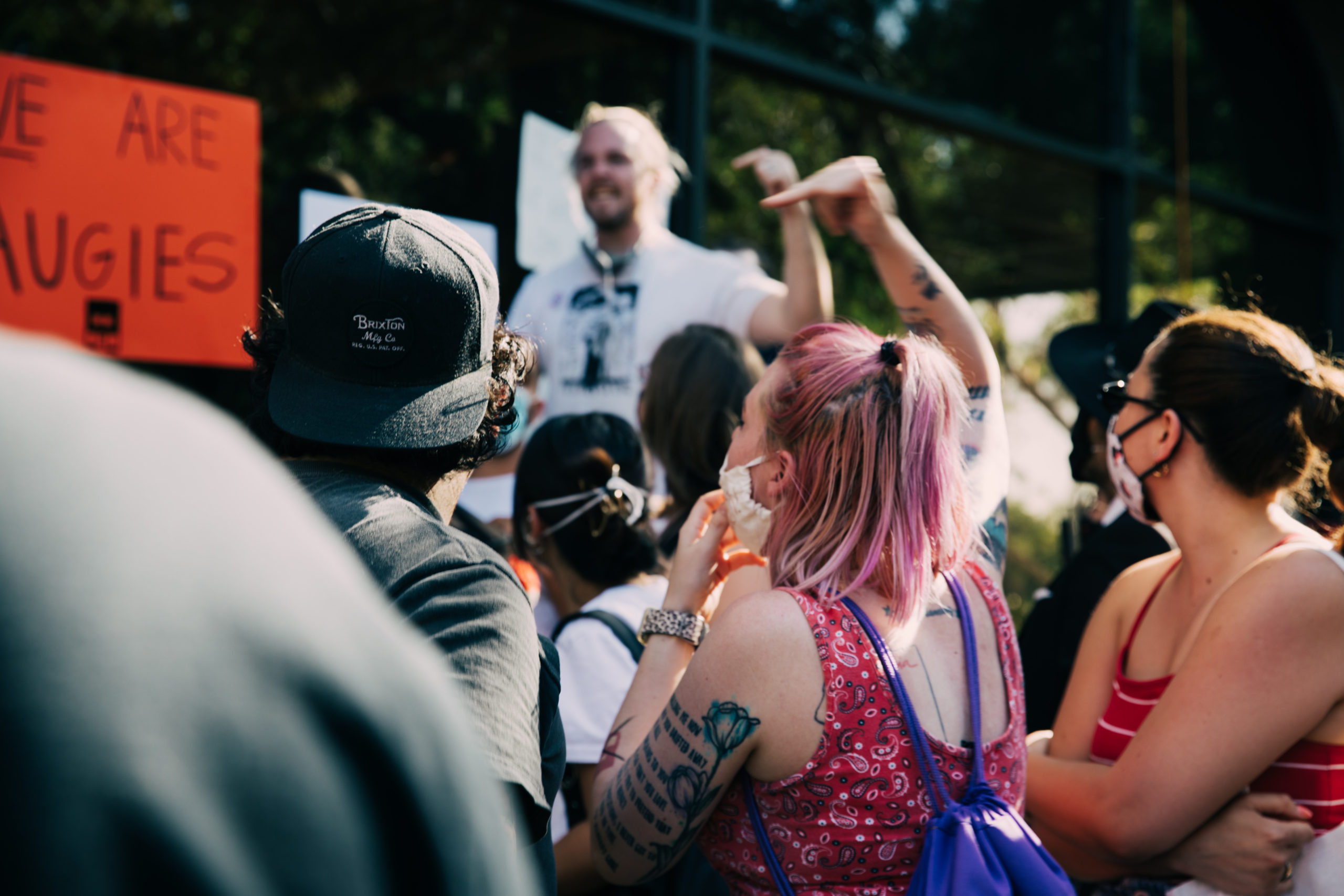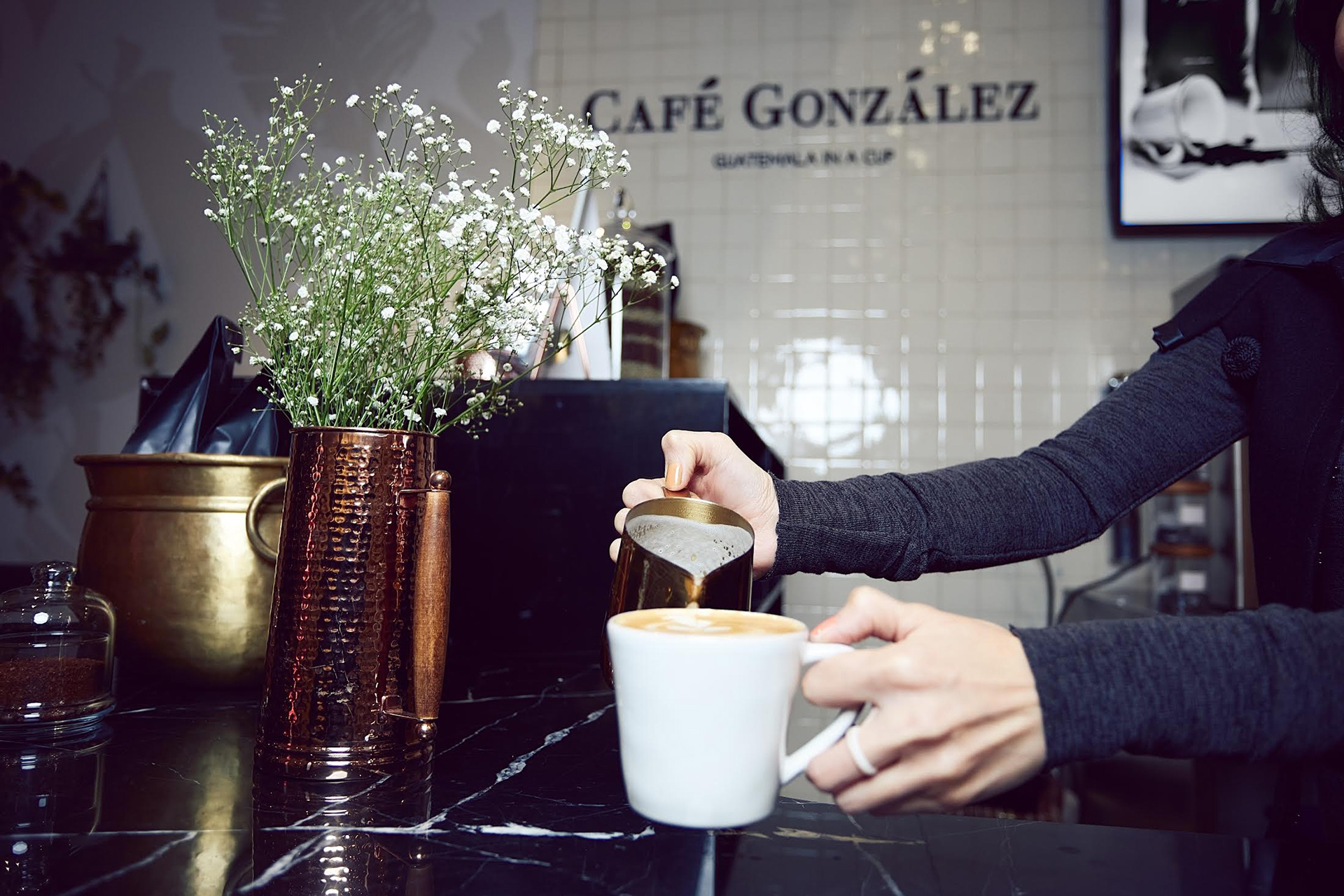
There’s something refreshingly familiar about the success of Brooklyn’s Drip Coffee Makers. A labor of love by Nigel Price, a decade-plus veteran of the NYC coffee scene, Drip began life last year as a mobile cart focusing solely on hand-brewed pour-over coffees, featured here as part of our Build-Outs of Summer series. In a world where most cafes were moving away from manual brews and toward automation, and multi-roaster cafes were shrinking their offer sheet—if no eschewing the concept entirely to start roasting for themselves—Price and Drip beat against the current. It was a risky move in the highly competitive New York City coffee scene, where high rent prices and a panoply of top-notch cafes can make it difficult for any new shop to put down stakes. But the gambit paid off.
And now, just one short year after the cart could be found posted up in various spots in Brooklyn, the wheels are off; Drip Coffee Makers has a brick-and-mortar home in Bushwick.
To learn more about the space, the move from mobile cart to brick-and-mortar, and about adding espresso to the shop’s menu, Sprudge contributor Jeremy Hernandez visited the new Drip Coffee Makers to speak with Price.
This interview has been lightly edited and condensed for clarity.

Talk to me about your transition from a cart to a brick-and-mortar.
The cart was initially just supposed to be a tool for proof of concept and to build the brand a bit. Once we got inundated with popup requests and catering assignments we had to quickly build a business model around it. But without the cart, I would never have been able to generate the extra capital as quickly to start the conversation about opening a physical location.
How did you find this space?
As with so much with drip, it was serendipity! Leaving an art studio in Bushwick I walked past the space as a realtor was closing up the space after showing it. After a short conversation and a quick walkthrough, I was convinced this was my space.

What’s the neighborhood like?
A beautiful microcosm of New York City. Literally every walk of life comes through the doors everyday and I get to make them coffee and take a glimpse through the lens in which they view the world. And with all of the turmoil and recovery our country is currently experiencing I sometimes feel as if I should be paying them to have coffee with me.
Do you ever miss the cart?
Everyday! So much of my current business model was cultivated behind that cart. Especially designing the layout entirely around the guest experience, allowing me to engage and/or anticipate their needs without breaking the workflow. At no point during a guest interaction do I have to look away or turn my back to a guest, we are completely engaged from the moment they enter the store until they’re gone.

What gear are you working on in the space?
My pour-over bar consists of 4 Kinto Slow Coffee drippers sitting on top of Hario scales and a Mahlkönig EK43S. And on the espresso bar is a matte black La Marzocco Strada AV/ABR (Auto-Volumetric/Auto Brew Ratio) and two matching Mahlkönig K30 grinders.

Why did you make those choices?
The pour-over bar is a complete rip off of some of the Japanese shops I love. I thought it would be a hard sell to get people to slow down for that cup of coffee, which takes approximately the same time as it does to make a latte, but it’s been amazing to watch guests evolve. Another rip off was the espresso bar, which I “borrowed” from my time last year at Partners Coffee, specifically the Bushwick location. I was leaning towards a Slayer, because they’re sexy as hell, but the Strada is easily the best machine I’ve worked on in the decade-plus that I’ve been in coffee.
Is there more stuff you plan to add in the coming months?
Waiting on my cold drip tower. The cold brew is good, but cold drip is illmatic!
Which roasters are you serving and why?
Black and White Roasters are my anchor, just because of the constant introduction of amazing coffees with varying processes and just as important, the level of consistency from bag to bag, from cup to cup. But we are essentially a multi-roaster shop so I always have six to eight different roasters on the shelves and on the pour-over.

What have been some of your favorite coffees?
Brandywine (Delaware), Cooperative (NC), Methodical (SC), Monogram (Calgary), Little Wolf (MA), there are so many, I could easily add a dozen or so names to this list.
As a Black business owner, what has community support felt like to you over the last few weeks? Talk to us about this experience in your own words.
I have to be honest, initially I didn’t completely embrace the idea of being a “Black” coffee shop when those lists first began circulating. I didn’t want what I perceived as charity or worse be a space for individuals looking to buy a few cups of coffee to feel as if they’ve done their part to fight systemic racism in this country. But what quickly happened was the shop becoming an even bigger hub for dialogue and conversation as well as opportunities to create new regular customers. Customer acquisition can be extremely costly, but getting guests in the door is a cakewalk (also definitely google “cakewalk”) compared to giving them a reason to return. Ultimately what we are trying to create is a community that is centered around coffee, not vice versa and that really resonates with people.
Jeremy Hernandez (@thejetboatadventurer) is a freelance journalist and photographer based in Brooklyn. Read more Jeremy Hernandez for Sprudge.
























